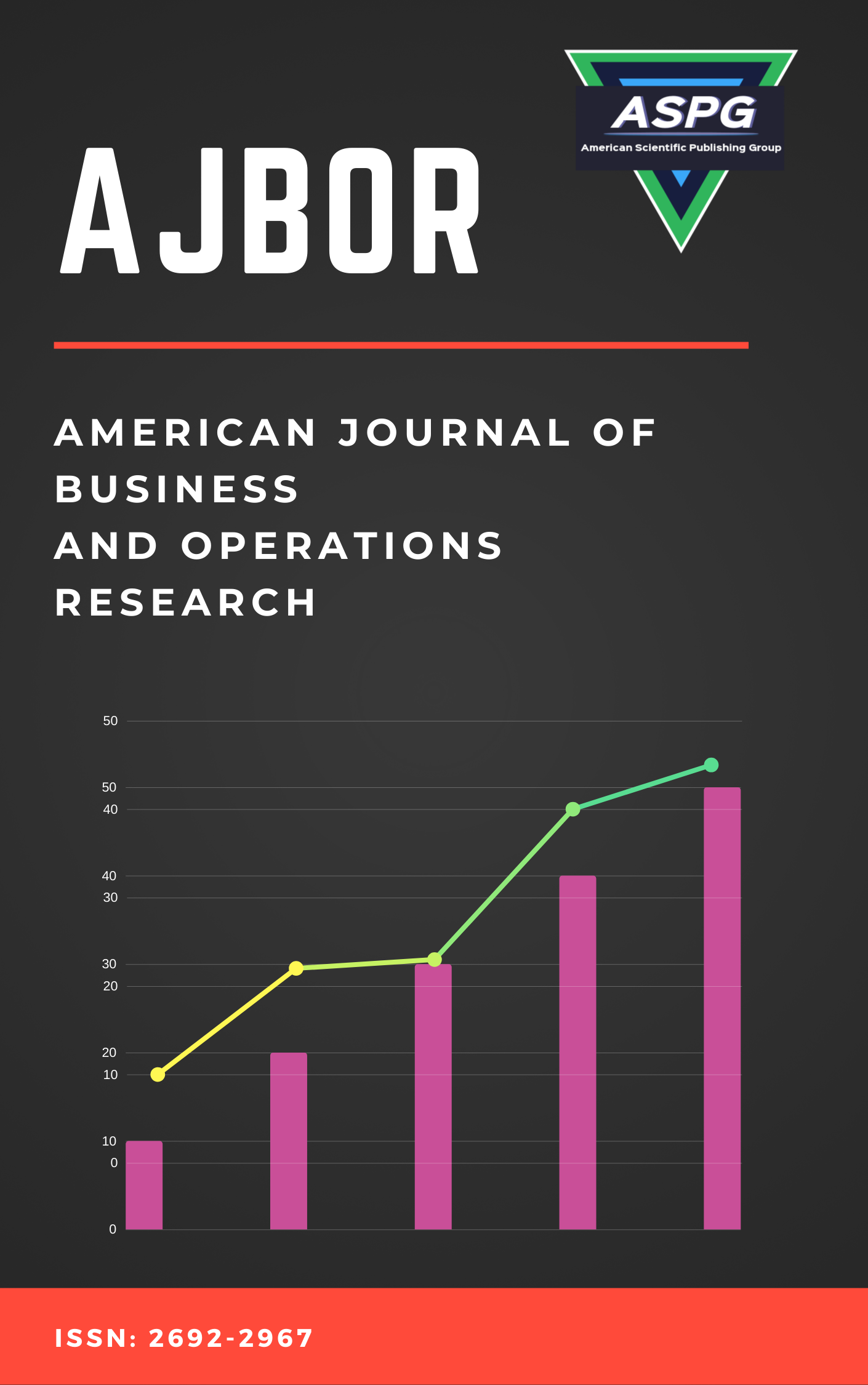

Volume 0 , Issue 2 , PP: 75-82, 2019 | Cite this article as | XML | Html | PDF | Full Length Article
Noura Metawa 1 *
Predictive modeling plays a pivotal role in enhancing supply chain financial optimization by accurately forecasting business demand. This study investigates the efficacy of employing Gradient Boosting Decision Trees (GBDT) as a predictive modeling technique for precisely forecasting business demand within the context of supply chain management. Leveraging a comprehensive analysis of historical business sales data, this research scrutinizes the effectiveness of GBDT in capturing intricate demand patterns and fluctuations. Through a meticulous methodology, encompassing iterative GBDT modeling, the study demonstrates the model's ability to iteratively refine predictions, resulting in enhanced accuracy in forecasting business sales. Visual representations showcasing temporal trends, volatility, and decomposition of sales data provide critical insights into demand dynamics, serving as foundational elements for improved predictive models. The comparative analysis between predicted and actual sales data highlights the predictive capabilities of the GBDT approach, offering valuable insights for optimizing supply chain financial management. While presenting promising results, ongoing research aims to further enhance GBDT's predictive power by refining algorithms and exploring additional influential factors in demand variability. This research contributes to the advancement of predictive modeling techniques within supply chain financial optimization, aiding businesses in strategic decision-making and resource allocation.
Predictive modeling , Business demand forecasting , Supply chain management , Financial optimization , Inventory management , Demand analysis strategies , Financial efficiency enhancement.
[1] Schoenherr, T., & Speier‐Pero, C. (2015). Data science, predictive analytics, and big data in supply chain management: Current state and future potential. Journal of Business Logistics, 36(1), 120-132.
[2] Waller, M. A., & Fawcett, S. E. (2013). Data science, predictive analytics, and big data: a revolution that will transform supply chain design and management. Journal of Business Logistics, 34(2), 77-84.
[3] Tiwari, S., Wee, H. M., & Daryanto, Y. (2018). Big data analytics in supply chain management between 2010 and 2016: Insights to industries. Computers & Industrial Engineering, 115, 319-330.
[4] Wang, G., Gunasekaran, A., Ngai, E. W., & Papadopoulos, T. (2016). Big data analytics in logistics and supply chain management: Certain investigations for research and applications. International journal of production economics, 176, 98-110.
[5] Dubey, R., Gunasekaran, A., Childe, S. J., Blome, C., & Papadopoulos, T. (2019). Big data and predictive analytics and manufacturing performance: integrating institutional theory, resource‐based view and big data culture. British Journal of Management, 30(2), 341-361.
[6] Kwon, I. W. G., Kim, S. H., & Martin, D. G. (2016). Healthcare supply chain management; strategic areas for quality and financial improvement. Technological forecasting and social change, 113, 422-428.
[7] Bose, R. (2009). Advanced analytics: opportunities and challenges. Industrial Management & Data Systems, 109(2), 155-172.
[8] Nguyen, T., Li, Z. H. O. U., Spiegler, V., Ieromonachou, P., & Lin, Y. (2018). Big data analytics in supply chain management: A state-of-the-art literature review. Computers & Operations Research, 98, 254-264.
[9] Islam, S., Keung, J., Lee, K., & Liu, A. (2012). Empirical prediction models for adaptive resource provisioning in the cloud. Future Generation Computer Systems, 28(1), 155-162.
[10] Ivanov, D., Dolgui, A., & Sokolov, B. (2019). The impact of digital technology and Industry 4.0 on the ripple effect and supply chain risk analytics. International journal of production research, 57(3), 829-846.
[11] Arunachalam, D., Kumar, N., & Kawalek, J. P. (2018). Understanding big data analytics capabilities in supply chain management: Unravelling the issues, challenges and implications for practice. Transportation Research Part E: Logistics and Transportation Review, 114, 416-436.
[12] Davis, J., Edgar, T., Porter, J., Bernaden, J., & Sarli, M. (2012). Smart manufacturing, manufacturing intelligence and demand-dynamic performance. Computers & Chemical Engineering, 47, 145-156.
[13] Appelbaum, D., Kogan, A., Vasarhelyi, M., & Yan, Z. (2017). Impact of business analytics and enterprise systems on managerial accounting. International journal of accounting information systems, 25, 29-44.
[14] Siegel, E. (2013). Predictive analytics: The power to predict who will click, buy, lie, or die. John Wiley & Sons.
[15] Babu, K. V. S. N. (2012). Business intelligence: Concepts, components, techniques and benefits. Components, Techniques and Benefits (September, 22, 2012.
[16] Sharda, R., Delen, D., & Turban, E. (2018). Business intelligence, analytics, and data science: a managerial perspective. pearson.
[17] Balcaen, S., & Ooghe, H. (2006). 35 years of studies on business failure: an overview of the classic statistical methodologies and their related problems. The British Accounting Review, 38(1), 63-93.
[18] Min, J. H., & Lee, Y. C. (2005). Bankruptcy prediction using support vector machine with optimal choice of kernel function parameters. Expert systems with applications, 28(4), 603-614.
[19] Fletcher, D., & Goss, E. (1993). Forecasting with neural networks: an application using bankruptcy data. Information & Management, 24(3), 159-167.
[20] Davenport, T., & Harris, J. (2017). Competing on analytics: Updated, with a new introduction: The new science of winning. Harvard Business Press.